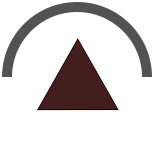It appears that your cart is currently empty

Order online or call us (504) 256-0030
Wood Grains
How to Choose? End Grain - Edge Grain - Face Grain
We use several different types of woods in our products.
Visit our Wood Types page to see samples.
What is End Grain, Edge Grain, or Face Grain?



End, edge and face grain refer to the different sides of a wooden board.
- End grain is the narrow, porous top and bottom edge of the board. The rings of the trees growth are sometimes visible in stack, parallel, curved lines.
- Face grain, or plain grain, is usually the wide face of a milled board, and exhibits multiple layers of grain on top of each other, often in U, V or even O shapes.
- Edge grain usually will be the long, thin edge of a milled piece of lumber, and always exhibits usually long and parallel grain patterns.

What Are the Benefits of End Grain Surfaces?
- End grain surfaces are not only particularly beautiful, but they also are advantageous if the surface is used for cutting. When the cutting blade comes in contact with the wood, it slices between the grain, rather than across it. Imagine you are holding a handful of spaghetti. If you take a knife and slide it across the length of the spaghetti to cut the handful in half, you are mimicking cutting across the edge or face grain of a piece of wood. Just like you would cut the pasta in half, you would also irreparably cut the grain of the wood. If you were to cut between the pieces of spaghetti from the top of the handful downward, you are mimicking cutting through the end grain. Just as the pieces of spaghetti will separate from one another as the blade passes between them and then squeeze back together after the blade leaves the handful, the end grain of a piece of wood will also spread to make space for the blade and then close back together after the blade is removed. It is for this reason that end grain surfaces are remarkably durable, not easily scarred and can be repaired simply with a quick mineral oil treatment and minimal sanding. If you think you would like to cut directly on the surface of your counter, then end grain is definitely the best choice for you.


Imagine the bundle of pasta in the photo above is a piece of wood with the grain running from the bottom to the top of the photo. Note how the spaghetti spreads to accommodate the width of the blade in the middle photo as it splits the bundle lengthwise. This is similar to how the grain in end grain countertops and cutting boards behaves.
